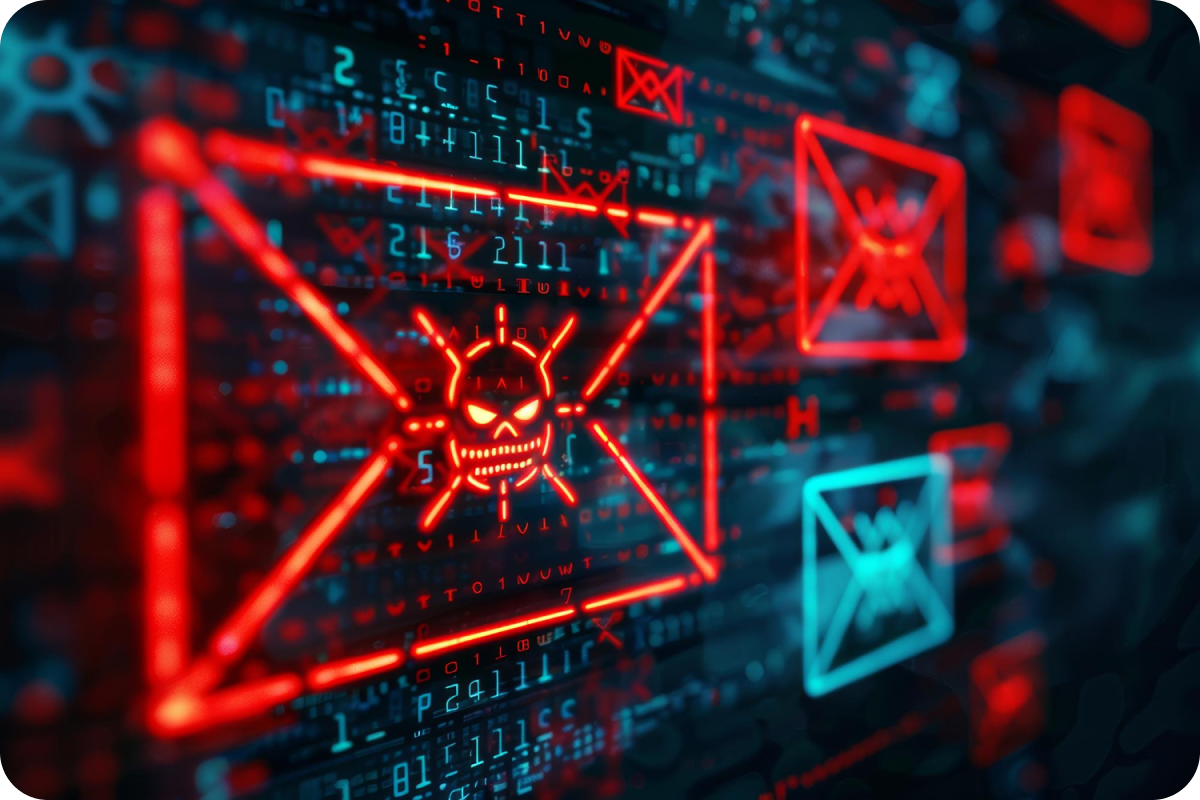Share this article
In this opportunity, we will talk about malware, how these malicious programs lurk in every corner of the network to sneak and infect everything in their path. We will see how they spread, explore their types, and how they can affect computer systems.
What is malware: The word malware comes from the English term “malicious software,” which is used to describe any program created with the purpose of damaging computer systems.

Malware is a constant threat, and we must always be prepared for it.
Malware are malicious programs that seek to infect computers. Usually, the creators of these types of viruses do so to cause damage or steal information, which they can later use to extort money from the owners of the information. They threaten to publish or expose the stolen information on the internet if the money is not paid.
On March 6th, a ransomware attack hit the systems of the Hospital Clínic de Barcelona, as announced by the hospital’s director in a press conference. According to reports, this attack has prevented the completion of around 150 surgical interventions and the cancellation of almost 3,000 external consultations of sick patients. The virus infection was so serious that it also affected the radiotherapy service offered in the clinic, as the devices used in that medical unit were connected to the hospital’s computer system.
According to a report by Proofpoint in Spain, 89% of organizations suffered a ransomware attack attempt last year, with 72% successfully infected. But globally, ransom payments are estimated to reach $456.8 million by 2022.
Types of malware that exist:
- Computer worm: this is a type of virus that has a life of its own, as it does not need the user to perform any specific action to infect a device. It can send copies of itself to your contact list or connected devices, and has the ability to replicate itself.
- Computer virus: This is a type of malware that aims to disrupt the proper functioning of a device. Unlike a worm, it needs to be executed by the user, who is often tricked into thinking that the program or application is genuine, and by activating it, their device and connected devices become infected.
- Spyware: This is a cousin of the computer worm, as it self-installs on the device, but is executed by a second application. This type of malware works secretly, collecting as much information as possible until it obtains what it wants through deception.
- Adware: This type of application seeks to make you spend money by showing you a lot of advertisements while you browse the web, or in the form of pop-ups at any time. It is installed using other umbrella applications.
- Ransomware: This type of virus hijacks the victim’s data, where only the cybercriminals have access to it. They usually demand money for the owners to recover their data, but even after paying them, there is no guarantee of the reliability of the cybercriminals.
- Trojan: As its name suggests, it emulates the Trojan horse in Homer’s Odyssey. This type of malware enters the computer when the user tries to install a legitimate program, but it opens the door for other programs to infect the device or selectively delete system files.
How can I know if I have been infected by any malware?
- If your computer is slower than usual, it could be due to an infection.
- The operating system of the computer may become blocked.
- You notice that you have less space on your computer.
- There is a strange increase in activity, even when you’re not connected to the internet.
- As we saw in one type of malware, Adware, you may see a lot of ads on your screen..
- New toolbars in the browser, extensions or add-ons appear without any reason.
- Your antivirus doesn’t work (it may have been disabled by malware).
- The homepage of your browser changes without your permission.
Basic measures to protect ourselves from malware
- Updating computer systems or software regularly.
- Backing up data periodically.
- In businesses, implementing control and security measures related to users’ interactions with the internet and the installation of applications on company computers.
- Installing antivirus software and additional measures to protect devices.
- Enabling the computer’s firewall, which helps protect against intruders entering through the network.
- Using common sense – if something looks suspicious, don’t open it; if you receive unsolicited attachments or are unsure of their reliability, don’t click on them.
- Keeping personal and financial information secure.
In summary, malware is a constant threat, and we must always be prepared.
By taking appropriate measures, we can protect our systems and data from malicious attacks that are always lurking, seeking any vulnerability in our computer systems to do harm.













